Christian Hakert
WCDT: Systematic WCET Optimization for Decision Tree Implementations
Jan 29, 2025



Abstract:Machine-learning models are increasingly deployed on resource-constrained embedded systems with strict timing constraints. In such scenarios, the worst-case execution time (WCET) of the models is required to ensure safe operation. Specifically, decision trees are a prominent class of machine-learning models and the main building blocks of tree-based ensemble models (e.g., random forests), which are commonly employed in resource-constrained embedded systems. In this paper, we develop a systematic approach for WCET optimization of decision tree implementations. To this end, we introduce a linear surrogate model that estimates the execution time of individual paths through a decision tree based on the path's length and the number of taken branches. We provide an optimization algorithm that constructively builds a WCET-optimal implementation of a given decision tree with respect to this surrogate model. We experimentally evaluate both the surrogate model and the WCET-optimization algorithm. The evaluation shows that the optimization algorithm improves analytically determined WCET by up to $17\%$ compared to an unoptimized implementation.
TREE: Tree Regularization for Efficient Execution
Jun 18, 2024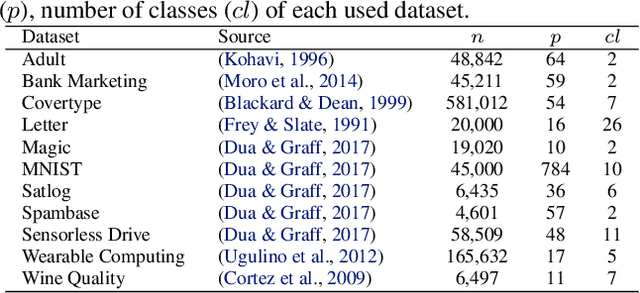
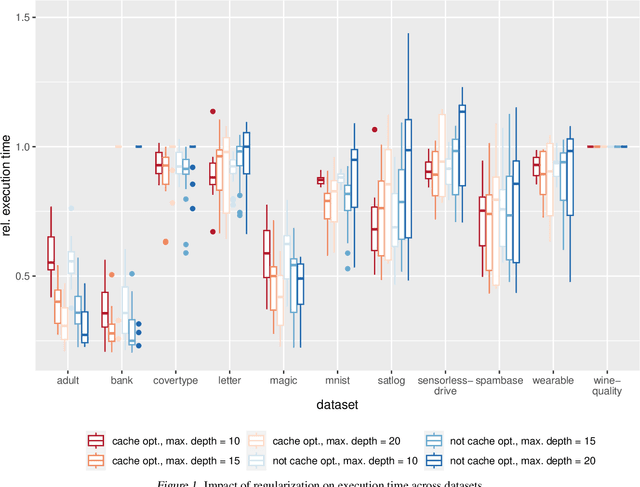
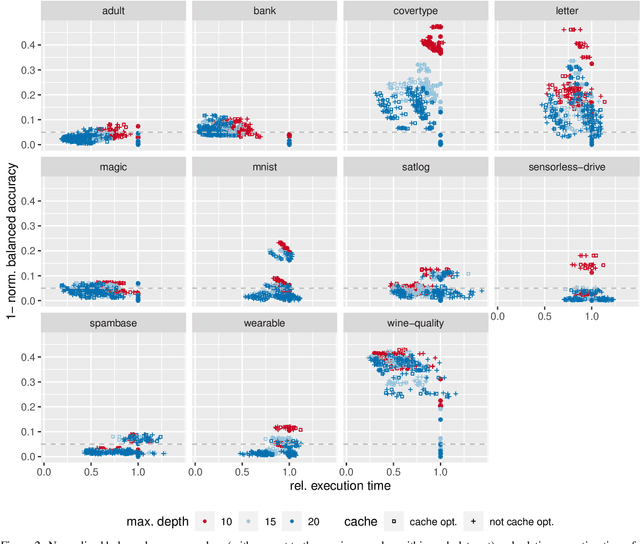

Abstract:The rise of machine learning methods on heavily resource constrained devices requires not only the choice of a suitable model architecture for the target platform, but also the optimization of the chosen model with regard to execution time consumption for inference in order to optimally utilize the available resources. Random forests and decision trees are shown to be a suitable model for such a scenario, since they are not only heavily tunable towards the total model size, but also offer a high potential for optimizing their executions according to the underlying memory architecture. In addition to the straightforward strategy of enforcing shorter paths through decision trees and hence reducing the execution time for inference, hardware-aware implementations can optimize the execution time in an orthogonal manner. One particular hardware-aware optimization is to layout the memory of decision trees in such a way, that higher probably paths are less likely to be evicted from system caches. This works particularly well when splits within tree nodes are uneven and have a high probability to visit one of the child nodes. In this paper, we present a method to reduce path lengths by rewarding uneven probability distributions during the training of decision trees at the cost of a minimal accuracy degradation. Specifically, we regularize the impurity computation of the CART algorithm in order to favor not only low impurity, but also highly asymmetric distributions for the evaluation of split criteria and hence offer a high optimization potential for a memory architecture-aware implementation. We show that especially for binary classification data sets and data sets with many samples, this form of regularization can lead to an reduction of up to approximately four times in the execution time with a minimal accuracy degradation.
Register Your Forests: Decision Tree Ensemble Optimization by Explicit CPU Register Allocation
Apr 10, 2024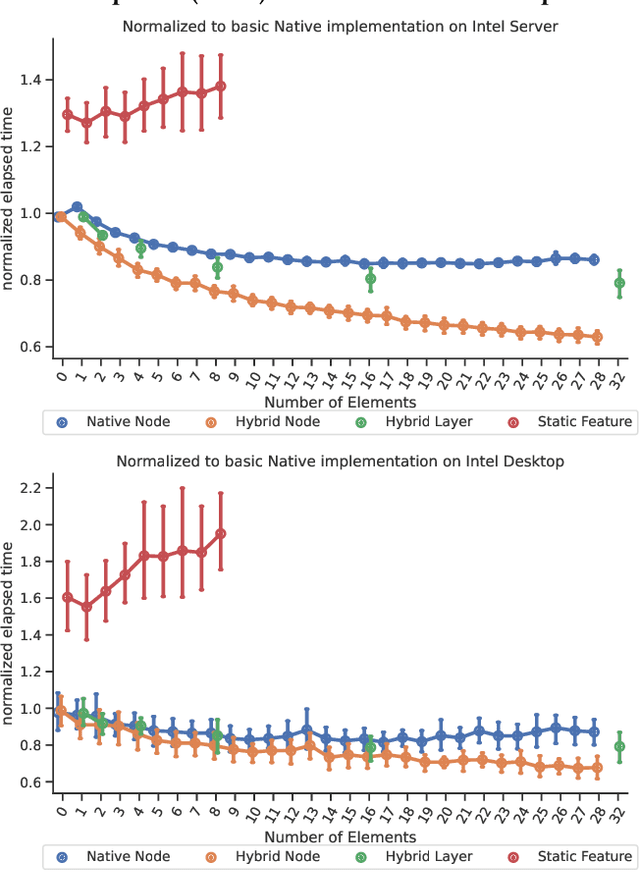
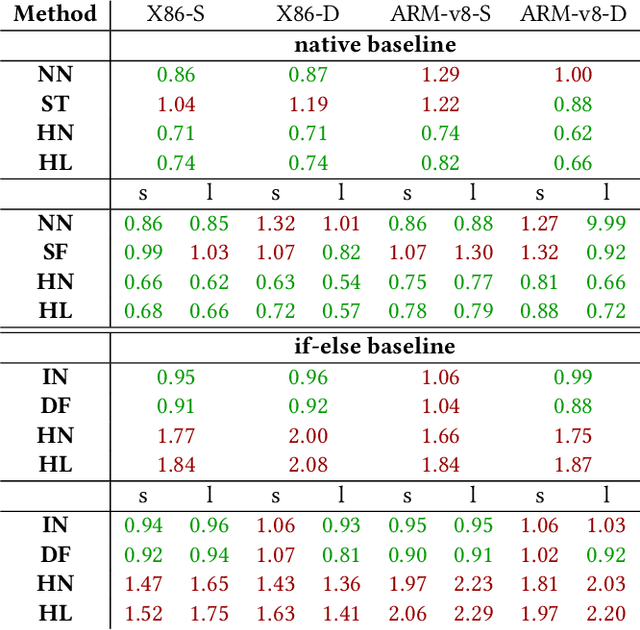

Abstract:Bringing high-level machine learning models to efficient and well-suited machine implementations often invokes a bunch of tools, e.g.~code generators, compilers, and optimizers. Along such tool chains, abstractions have to be applied. This leads to not optimally used CPU registers. This is a shortcoming, especially in resource constrained embedded setups. In this work, we present a code generation approach for decision tree ensembles, which produces machine assembly code within a single conversion step directly from the high-level model representation. Specifically, we develop various approaches to effectively allocate registers for the inference of decision tree ensembles. Extensive evaluations of the proposed method are conducted in comparison to the basic realization of C code from the high-level machine learning model and succeeding compilation. The results show that the performance of decision tree ensemble inference can be significantly improved (by up to $\approx1.6\times$), if the methods are applied carefully to the appropriate scenario.
FLInt: Exploiting Floating Point Enabled Integer Arithmetic for Efficient Random Forest Inference
Sep 09, 2022
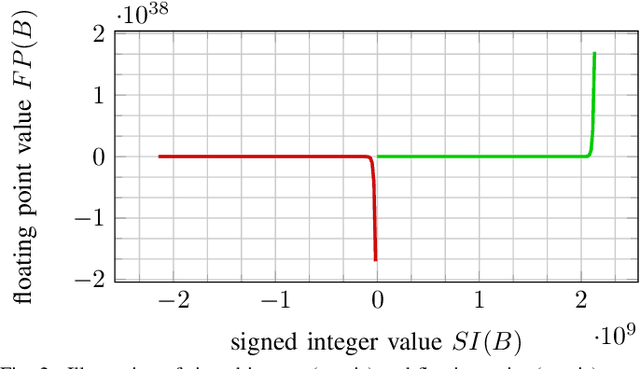
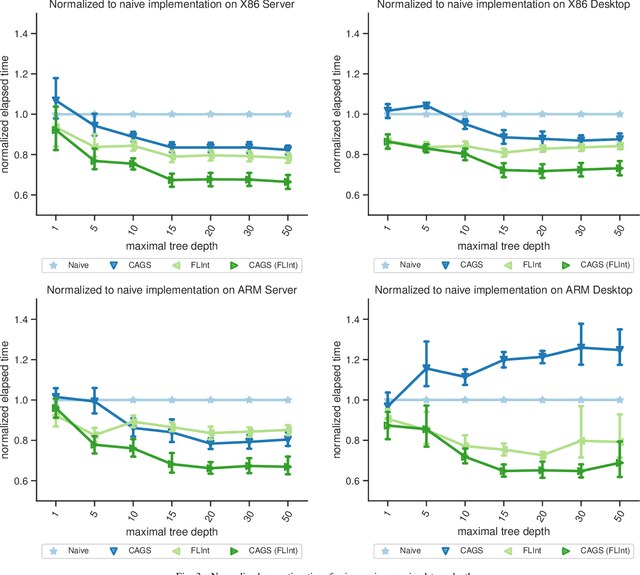
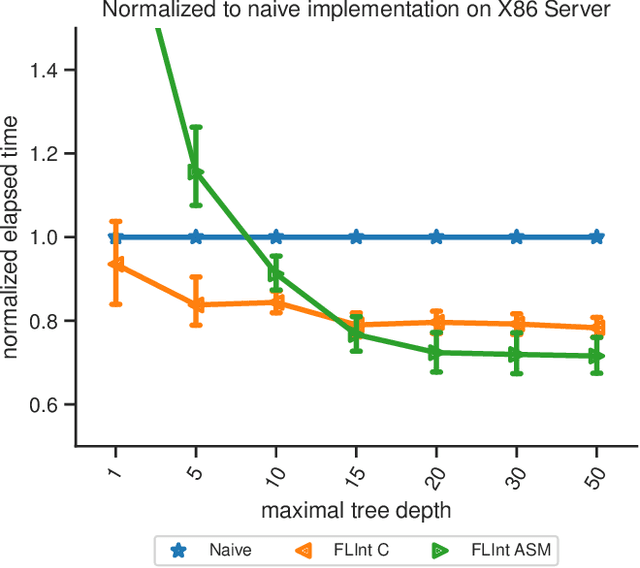
Abstract:In many machine learning applications, e.g., tree-based ensembles, floating point numbers are extensively utilized due to their expressiveness. Nowadays performing data analysis on embedded devices from dynamic data masses becomes available, but such systems often lack hardware capabilities to process floating point numbers, introducing large overheads for their processing. Even if such hardware is present in general computing systems, using integer operations instead of floating point operations promises to reduce operation overheads and improve the performance. In this paper, we provide \mdname, a full precision floating point comparison for random forests, by only using integer and logic operations. To ensure the same functionality preserves, we formally prove the correctness of this comparison. Since random forests only require comparison of floating point numbers during inference, we implement \mdname~in low level realizations and therefore eliminate the need for floating point hardware entirely, by keeping the model accuracy unchanged. The usage of \mdname~basically boils down to a one-by-one replacement of conditions: For instance, a comparison statement in C: if(pX[3]<=(float)10.074347) becomes if((*(((int*)(pX))+3))<=((int)(0x41213087))). Experimental evaluation on X86 and ARMv8 desktop and server class systems shows that the execution time can be reduced by up to $\approx 30\%$ with our novel approach.
Towards Explainable Bit Error Tolerance of Resistive RAM-Based Binarized Neural Networks
Feb 03, 2020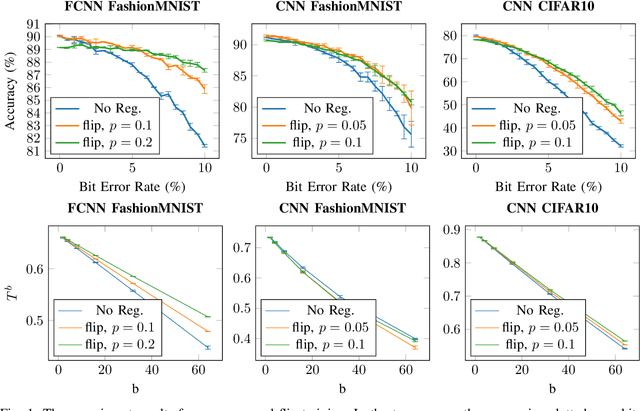
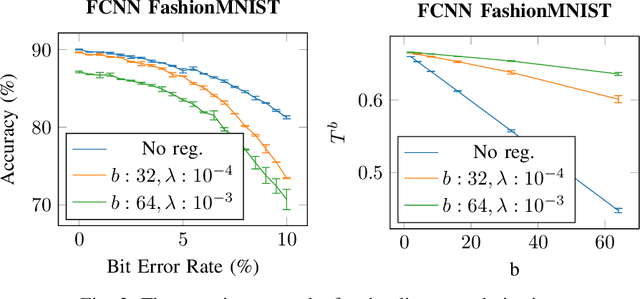

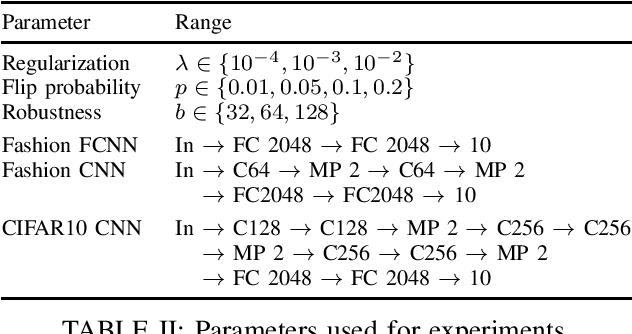
Abstract:Non-volatile memory, such as resistive RAM (RRAM), is an emerging energy-efficient storage, especially for low-power machine learning models on the edge. It is reported, however, that the bit error rate of RRAMs can be up to 3.3% in the ultra low-power setting, which might be crucial for many use cases. Binary neural networks (BNNs), a resource efficient variant of neural networks (NNs), can tolerate a certain percentage of errors without a loss in accuracy and demand lower resources in computation and storage. The bit error tolerance (BET) in BNNs can be achieved by flipping the weight signs during training, as proposed by Hirtzlin et al., but their method has a significant drawback, especially for fully connected neural networks (FCNN): The FCNNs overfit to the error rate used in training, which leads to low accuracy under lower error rates. In addition, the underlying principles of BET are not investigated. In this work, we improve the training for BET of BNNs and aim to explain this property. We propose straight-through gradient approximation to improve the weight-sign-flip training, by which BNNs adapt less to the bit error rates. To explain the achieved robustness, we define a metric that aims to measure BET without fault injection. We evaluate the metric and find that it correlates with accuracy over error rate for all FCNNs tested. Finally, we explore the influence of a novel regularizer that optimizes with respect to this metric, with the aim of providing a configurable trade-off in accuracy and BET.
 Add to Chrome
Add to Chrome Add to Firefox
Add to Firefox Add to Edge
Add to Edge